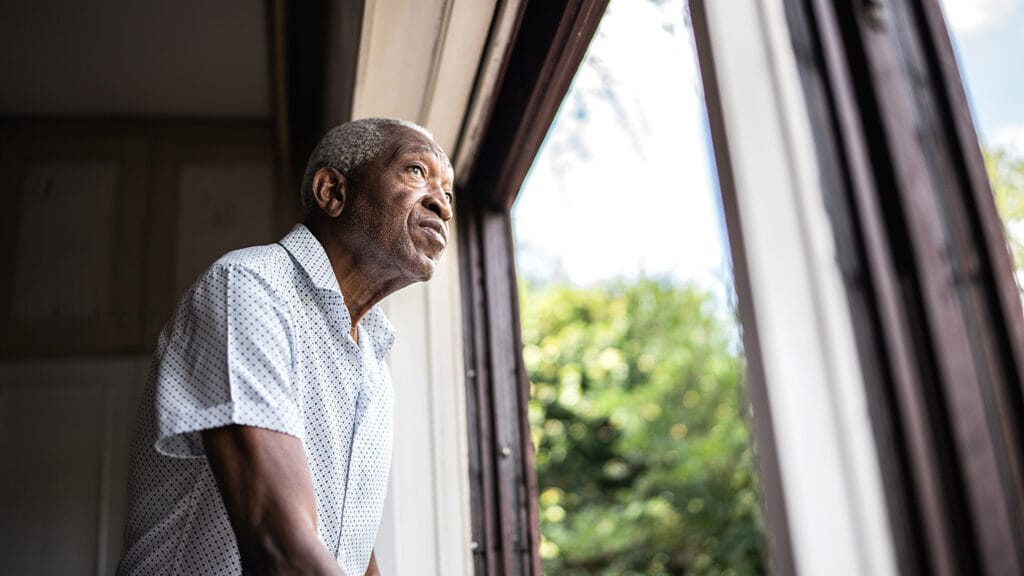
Trends in home ownership and equity, income, health and other issues indicate that millions of middle-income Black, Hispanic or rural older adults may not have the financial resources they need to pay for senior living and healthcare expenses as they age in the coming years, according to the findings of a new study from NORC at the University of Chicago.
The information must be considered in future policies, say those affiliated with the research.
“Policymakers, as well as the healthcare and senior housing communities, have substantial work to do to ensure that race does not become a hindrance to aging well,” Sarita A. Mohanty, MD, MPH, MBA, president and CEO of the SCAN Foundation, said in a statement.
Results of the latest “Forgotten Middle” study, which was commissioned by the foundation, were released Thursday. The study focuses on older adults whose financial resources won’t be enough for them to be able to afford current senior living and care offerings but will be too high for them to qualify for Medicaid. The researchers defined middle-income older adults as those aged more than 75 years who have annuitized income and assets of $26,000 to $103,000 in 2020 dollars.
“The analysis shows the number of middle-income older adults of color will increase from 12% in 2020 to 25% by 2035, yet this population will be least likely to afford senior housing and care when compared to the middle-income older adult population as a whole,” according to the report authors.
Although the middle-income older adult population is becoming more diverse racially and ethnically in the United States, “within the middle market, the highest percentage of Black and Hispanic older adults is found within the lowest quartile of financial resources,” they said.
“White older adults comprise 82% of the top quartile of income and asset distribution within the middle market, which is disproportionately higher than the middle-income older adult population distribution,” according to the research report. “In contrast, 35% of the bottom quartile are older adults of color, disproportionately higher than the expected middle-income population as a whole.”
Regarding race, the researchers said that:
- Home ownership by younger Black older adults is declining and is expected to fall substantially by 2035, with Black and Hispanic homeowners projected to have lower home equity.
- Black and Hispanic older adults tend to hold most of their assets in low-yield or depreciating assets such as savings accounts or vehicles, rather than in appreciating real estate or traditional retirement financial tools used by white and other older adults, such as the stock market or individual retirement accounts. Holding fewer liquid assets — those that can be converted to cash quickly — may make it more difficult for Black and Hispanic older adults to be able to afford housing and care options. And “[l]iquidizing a vehicle is both inconvenient and impractical as it eliminates a source of independence in a society increasingly dependent on private vehicle access,” the report authors said.
Additionally, they said:
- Black and Hispanic older adults tend to have higher rates of chronic conditions and mobility limitations, which likely will increase their needs for additional care.
- By 2035, only a fourth of Black older adults and 40% of Hispanic older adults will be married, leaving those living alone at greater risk of adverse health events and social isolation. In fact, marriage rates are expected to drop below 50% across all racial groups.
“Wealth is not distributed evenly across the Forgotten Middle. Now we know that Black and Hispanic older adults are the worst off,” said Sarah Rayel, senior director in NORC’s Health Care Strategy department.
Regarding middle-income older adults living in rural areas, the researchers said that:
- They may face distinct challenges in their ability to age well due to workforce shortages and other factors.
- Rural adults tend to have lower incomes than their urban counterparts, which will affect their ability to afford care and housing options in the future.
- Transportation is a “substantial challenge” for those who wish to age in place. Ninety percent of rural trips are made in private vehicles, meaning that rural older adults face an additional challenge to remaining mobile if driving becomes unrealistic or impossible for them.
- Rural communities tend to have poorer health outcomes and more limited access to certain care services.
The new analysis builds on a 2019 study funded by the National Investment Center for Seniors Housing & Care and supported by the John A. Hartford Foundation, the SCAN Foundation, the AARP and the AARP Foundation. That study, conducted by researchers at NORC, the University of Maryland School of Medicine, Harvard Medical School and NIC, found that 54% of the 14.4 million middle-income older adults in 2029 in the United States will lack the financial resources to pay for senior housing and care.
A separate analysis that year by NORC found that 2.3 million more older Americans would be able to afford senior living if the annual cost were reduced by $10,000, and if $5,000 more were cut from the price, an additional 3.6 million people would be able to afford it.
A 2022 update to this research found that 11.5 million older adults (72% of those aged more than 75 years) will not be able to afford assisted living by 2033, and they likely won’t qualify for Medicaid to pay for their long-term care needs either.
Read more about latest the study and its methodology here.


